Parainen (Pargas) 作者: 来源: 发布时间:2021-10-16
一、所属省或是州,具体位置,人口,面积
Pargas is a town and municipality of Finland, in the Archipelago Sea. The big limestone mine in Pargas is the base of the main industry and except for the central parts, the municipality is still mostly rural.
Pargas is located in Åboland in the province of Western Finland and is part of the Southwest Finland region. It was created as Väståboland on January 1, 2009 in Southwest Finland, when the municipalities of Pargas, Nagu, Korpo, Houtskär and Iniö were merged into a single municipality.
The municipality has a population of 15,225 (31 January 2019) and covers an area of 5,548.17 square kilometres (2,142.16 sq mi) of which 4,666.46 km2 (1,801.73 sq mi) is water. The population density is 17.27 inhabitants per square kilometre (44.7/sq mi).
The town is bilingual with a majority (57.6%) speaking Swedish as their native language.
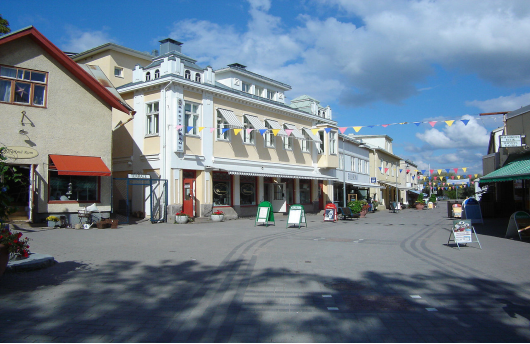
https://sv.wikipedia.org/wiki/Pargas
https://www.pargas.fi/fi/etusivu/
二、自然地理
1.地理条件
Pargas was also called the " Capital of the Archipelago ", as the city is located in the Åboland archipelago and often saw itself as the central town for it. Pargas consists of many islands and islets (22 inhabited), of which 254 have their own page on Wikipedia. Pargas was the only city in Finland that was completely surrounded by water. The central parts of Pargas still have a road connection and therefore Pargas was not officially counted as an archipelago. The archipelago road out to Nagu, Korpo and Houtskär goes through Pargas.
The center in Pargas is called Malmen and is located on both sides of Kyrksundet between Ålön and Kyrklandet. Several picturesque small bridges lead across the strait. The business center, with many small shops and restaurants, is located on the west side, mainly around the pedestrian street Köpmansgatan. Just south, towards Kyrkfjärden, is Hotell Kalkstrand and the guest harbor (Kalkholmen).
The older center buildings on the other side of the strait, Kyrkmalmen or Gamla Malmen, have been well preserved. Here are the medieval greystone church, Fredrikastugan and Gullkrona looms.
The huge open pit (see Parga's lime mine) is located southwest of the center. Close to this is Storindustrin (southeast of the mine, by Kyrkfjärden) and in the northwest, on the other side of Skärgårdsvägen, the industrial areas in Sysilax and Finbydal. In Kyrklandet, the industrial area on Norrbyåsen is located northeast of the center and what was previously Navire (at Hessviken further towards Turku, next to the Hessund Bridge).
2.交通情况
The city center is close to major cities: Turku is 23 km, Helsinki 173 km and Tampere 180 km.
https://fi.wikipedia.org/wiki/Parainen
三、经济发展和规模
City of Pargas tax rates in 2020:
Income tax rate 20%
General property tax rate 1.5%
Tax rate for permanent residential buildings 0.47%
Tax rate for non-built construction sites 3%
Other residential buildings (Recreational buildings, outbuildings, etc.) 1.5%
Parainen’s income base has started to weaken in 2016–2019. An imbalance between expenditure and revenue has arisen during that period mainly due to a decrease in total tax and government contribution revenues. Tax revenues did not increase at all in 2016–2018 and the growth forecast for 2019 remained largely unrealized. In addition, net social and health care costs exceeded very strongly in 2019, which further strained the result. State funding in 2016–2019 contracted by about EUR 4 million at a time when tax revenues have stagnated and are not developed at the same pace as wages and price indices.
The city anticipates taxes in the 2020 budget and a significant increase in government revenue. It is noteworthy that now that the year 2015 the reductions planned in the state contribution reform have been implemented, state contributions will be corrected upwards again and will be comply with future index changes. The situation is now still challenging in 2020 due to the scale of operations and costs in 2019. Compared to other municipalities, the city of Parainen still has good total funding per inhabitant. This still enables good services. Pargas was ranked as one of the few five-star civilizations in our country in a large study and has achieved top results in nationwide comparisons of student writing. Pargas continue to invest more in basic education than other municipalities and cities, and we need to make this clearer
Parainen’s income statement for 2019:
The city's operating income in 2019 totaled EUR 16,945,000. EUR 436,000 increase for the year Compared to 2018, external income increased by 2.6% (1.96%). External operating income covered 15.1% of expenses as in previous years (15.4%). The city's operating margin (net operating expenses) was EUR 95,444,000 (EUR 90,559,000), an increase of 5.4%. Total expenses were EUR 112,389,000, an increase of EUR 5,321,000 from 2018. Personnel expenses totaled EUR 50,193,000, which is 44.7% of operating expenses. Staff costs increased by 2.3% compared to 2018. External purchasing services rose to EUR 51,168,000 (EUR 47,444,000), ie the increase was as much as EUR 3,724,000 (7.8%). The decline in operating margin led to all during the year the investments made were made with external loan financing.
City of Parainen. (2019). 2019 Financial Statement. https://www.pargas.fi/fi/talous
四、产业特点/重点项目
Pargas' center is traditionally an industrial area and the industry offers a quarter of the jobs. One of Northern Europe's largest open pit mines is located close to the city center. Lime is mined in the open pit and lime processing is another significant part of Pargas' industry. Nordkalk handles lime mining and lime production. The other three major industries are Finncement (cement production), Paroc (insulation material) and Maxit (putty and plaster). However, most of Pargas is rural.
A not insignificant part of the inhabitants work in Turku but live in Pargas, where land prices are lower and attractive plots easier to get over. Pargas also has significant holiday accommodation (3000 summer cottages), especially along the beaches and on the islands further away (total shoreline over 700 km)
The city government decided in September that the mayor will start the economy a rebalancing program that will allow the city to adjust its operations to its economic carrying capacity over the years 2020-2022 At its meeting on March 30, 2020, the city government received a proposal for the 2020-2022 economy rebalancing program and will be considered by the City Council in May 2020. When implemented the impact of the rebalancing program and measures on the annual net cost is EUR 334 200 in 2020, EUR 2,025,200 in 2021 and EUR 2,532,000 in 2022. In addition, the city's result will be affected in 2022 a positive effect of approximately EUR 5 million if the city council decides to transfer water supply assets as a business transfer to Paraisten Kaukolämpö Oy.
The purpose of the rebalancing program is to balance the city’s operating costs to match its own carrying capacity. However, in the current corona epidemic, the rebalancing program is in danger of failing insufficient, and the city is likely to make additions to it very soon.
City of Parainen. (2019). 2019 Financial Statement. https://www.pargas.fi/fi/talous
五、风景名胜,景点( attractions)
1. Parainen Industrial Museum
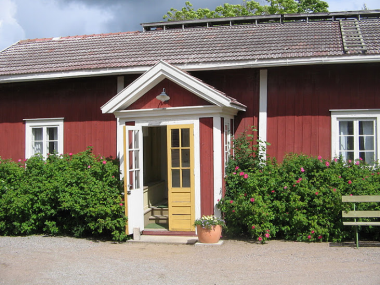
The Parainen Industrial Museum is located next to the Nordkalk limestone quarry, next to the intersection of Skräbbölentie and Kaivostie. The museum was opened in 1982. Limestone finds have been of great importance to Parais since the 14th century. The museum's collections tell in many ways about the operations of Parainen Kalkkivuoriosakeyhtiö in the locality. Through pictures and texts, you can get an idea of the lime and cement industry in Parais and the related social responsibility and leisure activities that have belonged to the company.
The company also engaged in extensive merchant shipping and related artefacts are also on display. One of the rooms is decorated as the office of Director Emil Sarlin. The largest open pit in the Nordic countries can be seen from a vantage point.
The exhibition also tells about the types of rocks, fossils and especially the beautiful mineral, pargasite, which is currently mined in the Parainen mine, which is named after the locality. In one of the rooms you can get acquainted with the equipment and methods used by the chief geologist Adolf Metzger in his work.
https://pargashembygdsmuseum.fi/fin/teollisuusmuseo/
2. Pargas Lime Mine
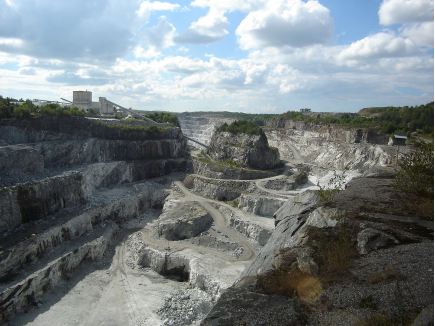
Parga's lime mine is Finland's largest open pit mine. Limestone began to be mined in Pargas as early as the 14th century, and remains of smaller limestone mines can be found in several places.
The deepest site of the open pit is 113 meters below sea level, and tunnels for various purposes are located at much greater depths. The mine and the industries around it form the basis of Pargas as an industrial town. The mine is operated today by Nordkalk. The company started in 1898 as Pargas Kalkbergs Aktiebolag.
There are several vantage points from which you can see the open pit. In connection with the Rowlit festival, concerts are held in the open pit, which requires extensive protection measures, as boulders at the edge of the open pit can also come loose during the explosions.
3. Westerholmstigen
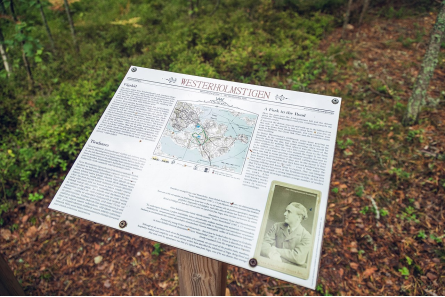
Westerholmstigen is a nature and culture trail on the island of Ernholm, in the municipal area Nagu in the city of Parga. The trail begins and ends at Nagu Kyrkbacken. Westerholmstigen is dedicated to the famous Finnish landscape painter Victor Axel Westerholm, born January 4, 1860 in Turku, died November 19, 1919 in Turku, who spent summers in his childhood and youth with his grandmother Maria (Maja Stina) Henriksdotter on Ernholm in what was then Nagu municipality.
During Victor Westerholm's childhood and youth, the beach meadows on Ernholm were used as cowsheds, and according to Nagubon Nina Söderlund (whose grandfather was Victor Westerholm's little cousin) and Nagubon Rune Franzén (whose grandfather was Victor Westerholm's little cousin), it is more than likely that the inspiration for Victor Westerholm's later paintings of cow pastures have a strong connection to Westerholm's childhood experiences from Ernholm in particular.
https://sv.wikipedia.org/wiki/Westerholmstigen
六、历史文化
1.历史
The oldest finds that show that hunters and fishermen moved in the area are 4500 years old. At that time, Pargas was another carving landscape (see Landhöjning). Settlement closer to land existed much earlier and people were already moving in the outer archipelago even then. The Stone Age settlement in Fagervik on Stormälö is the oldest in Pargas and dates from between 2800 and 2450 BC. From the late Stone Age there are several finds, which show that the archipelago was inhabited.
During the Middle Ages, some saviors lived in Pargas, mainly the low saviors. The most significant of the salvation estates in Åboland was Qvidja, who by inheritance belonged to the Fleming family. In 1556 Gustav Vasa stayed at Qvidja. At this time, there were 103 villages and 359 farms in Pargas and thus probably 2000–2500 inhabitants. Agriculture was the dominant industry, but lime was already burned at this time, primarily for the needs of Turku.
Finland's national poet, Johan Ludvig Runeberg lived for a short time in Pargas before and after the Turku fire in 1827. In Pargas he met his future wife Fredrika Runeberg born Tengström, who also moved to Pargas after the Turku fire.
The suspension bridge over Rävsundet was built in 1963 and then replaced a pontoon bridge, before the war there was a ferry connection here. The bridge over Hessundet was built in 1938. Together with smaller bridges over Kustö Sound and Kyrksundet, these provide the city center with a permanent road connection to the mainland. Several of the larger islands are still dependent on ferries.
Pargas köping was merged with Pargas landskommun in 1967. Pargas became a city on January 1, 1977, when köping was abolished in Finland.
On 1 January 2009, Pargas merged with the archipelago municipalities of Nagu, Korpo, Houtskär and Iniö to form the new municipality of Väståboland. The municipality changed its name to Pargas with the votes of the residents of Pargas shortly after the merger agreement ceased to be legally binding.
2. 文化体育
Archipelago National Park
The Archipelago Sea National Park was established in 1983 and, in addition to nature, must also protect the archipelago culture and various cultural landscapes. The national park itself comprises just over 2,000 of the approximately 8,400 islands and cobs within the cooperation area. With some exceptions (especially the areas of the Armed Forces), the national park includes all state-owned land within the national park's cooperation area, more or less the entire archipelago's outer archipelago east of Åland and south of Lövskärsfjärden in Houtskär and south of Korpo , Nagu , Pargas and Kimito's main islands.
It is free to move with your own boat in the national park, with the exception of certain protected areas. Connection boats operate to the inhabited islands and many entrepreneurs offer boat transport by agreement.
https://sv.wikipedia.org/wiki/Sk%C3%A4rg%C3%A5rdshavet
七、其他信息
Rowlit Annual Music Festival
Rowlit is a summer music festival in Pargas, Finland. The festival usually lasts 1-3 days in July. The event has been held every summer in Pargas since 1991, except for the summer of 2010 when the festival had a break.
The festival includes concerts with world artists in Finland's largest open pit, Parga's lime mine. The name of the festival is a Finnish-Swedish spelling of the local dialectal pronunciation of "fun".
https://sv.wikipedia.org/wiki/Rowlit
八、联系方式
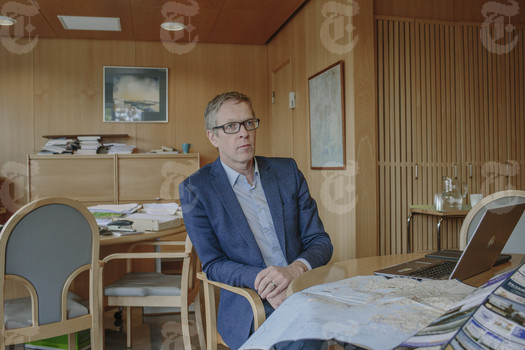
Mayor: Patrik Nygren
Telephone: 02 458 5700
Email: Parainen (at) parainen.fi
https://www.pargas.fi/fi/yhteystiedot-kaupunki
